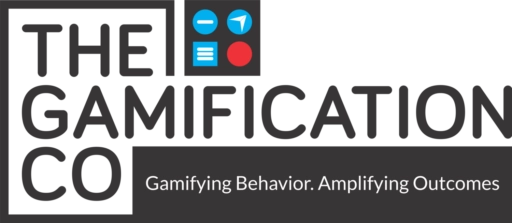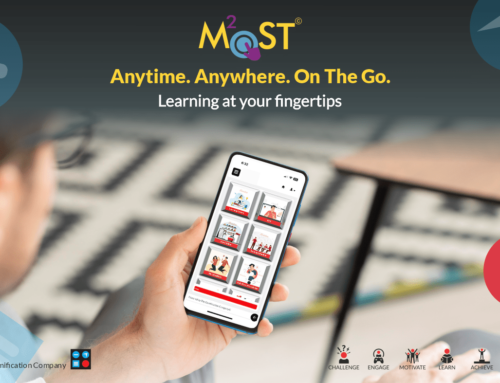In my previous blog post, I discussed how gamification can revolutionize the new norm of work. In this post, I’d like to explore how gamification can be harnessed to amplify both individual and organizational outcomes.
Many of us have experienced the pressure to perform our best at work – whether it’s driven by deadlines, caffeine, or the promise of a big bonus. But the truth is, these stressors can often take a toll on our mental and physical well-being, and ultimately hinder our performance. In fact, this “always-on” mentality has become a norm in many workplaces, but it’s not necessarily the most effective way to achieve our goals.
Disengagement in the new norm?
In today’s fast-paced work environment, the traditional goal-oriented approach to work culture has struggled to keep up with the pace of change. The rapid evolution of technology and market ecosystems, as well as the changing thought processes and behaviours of the younger generation entering the workforce, has led to a lack of engagement in the workplace. This has resulted in rising attrition rates, falling productivity, and a talent drain.
Traditional top-down approaches to rewards and consequences management are no longer effective and can even be counterproductive over time. Limited social interaction in the current and possibly future working environment exacerbates this issue. While going digital can help, it is essential to focus on the “human” factor in the entire process.
This is where gamification can make a difference. By leveraging the principles of play and intrinsic motivation, gamification can help individuals tap into their natural curiosity, creativity, and desire to achieve. Rather than relying on external stressors, gamification can create a more engaging, enjoyable, and ultimately effective way to approach work.
To build engagement from the bottom up, gamification can be a powerful tool. Gamification drives self-motivation and takes the disengaged brain into a state of play, leading to higher levels of engagement and belief in the task at hand. In this blog, we will discuss a case study that showcases how gamification successfully built employee engagement and amplified organizational performance in a complex, remotely distributed multinational organization with a traditional brick-and-mortar structure.
The prelude
The company, a major Engineering, Manufacturing and Projects player in India with a worth of 21 billion USD, embarked on its digital journey in 2016. Despite the implementation of numerous digital solutions on a regular basis, it was evident that a unique and innovative approach was necessary to effect the desired transformational change in an industry where “human capital” was of paramount importance.
During a cross-functional meeting, the heads of digital and HR brought up the concept of gamification, which seemed like a potential solution. Given the industry’s context, they cautioned the team to proceed with care, but the idea resonated with everyone and the pieces began to fall into place.
Can gamification be effective in traditional brick-and-mortar business settings?
Many people in the industry were skeptical about whether gamification could be applied in conventional brick-and-mortar business environments. There were doubts about whether it could be executed digitally without disrupting productivity, and whether it could truly bring about long-term change. People were also wondering how to make it understandable, appealing, and motivating, and how it could contribute to business performance.
The Projects business, being a steel and concrete industry, had problems for being dull and uninteresting. Despite the confusion surrounding gamification, the leadership decided to consult with us, The Gamification Company, (operating under the umbrella of Paathshala Learning Solution) on how to implement it effectively. After several discussions, we raised awareness about how gamification principles could transform human behaviors, and the team began to move forward with implementing the plan.
In addition to our expertise as gamification evangelists, we were fortunate to have developed an innovative gamification platform called COROEBUS™, which we were able to offer to the organization.
Step 1: Defining the desired outcome – The Have
By applying the ‘Ethos of Gamification’, which we practice at TGC, the initial step of the initiative was to clearly define the expected results, both tangible and intangible. As we progressed, it became apparent that there were multiple outcomes visible, both tangible and intangible.
One of the most significant and sustainable results identified by the leadership was to instil a sense of discipline and efficiency in Billing and Collections, while also driving digital adoption, reducing working capital, and improving productivity.
Step 2 – Identifying the GAMIFICATION theme
The gamification initiative was designed around cricket, a popular sport and almost a religion in the Indian subcontinent. The backdrop of a well-known cricket tournament, TIPL (Transportation Infrastructure Premier League), was used as a central theme. With the cricket theme available on the Coroebus platform, designing the game and execution became relatively easy. The selection of the theme was crucial as it was the first time such an initiative was introduced in a very traditional organization. The theme had to appeal across various levels, age groups, and genders.
Step 3 – Defining the engagement levers – The ‘Do’
To ensure high engagement levels, the business KPIs that would drive the desired outcomes were aligned with game elements in a critical exercise. The alignment had to be designed based on the frequency of available data as a continuously moving scoreboard was essential. The scoring runs in cricket were aligned with the business KPI of the daily progress report, as it was the first thought that came to mind when thinking about cricket. The Coroebus platform’s built-in balanced scorecard mechanism ensured that all KPIs were subliminally focused on. To drive “digital adoption,” the organization’s digital tools were used as the only data source for the KPIs.
Step 4: Driving Engagement: Using Neuroscience of Play & “Yu Kai Chou’ inspired Octalysis Principles – The ‘Be’
Throughout the gamification initiative, Octalysis principles were implemented at multiple levels and layers. The primary objective was to create a sense of ‘Accomplishment’ and ‘Ownership’ at the project level by using leaderboards that were accessible on both desktop and mobile devices.
As this was a project-based competition, a sense of ‘Meaning’ was instilled in the project team members. They were playing for their respective teams, which also drove a sense of ‘Avoidance’ as no one wanted to see their teams sitting at the bottom of the leaderboard for an extended period of time. Despite the fact that the project teams were located in remote parts of the country, the transition from ‘Fence Sitters and Laggards’ to active participants was achieved within a couple of weeks because of ‘Social Influence’ facilitated by the widespread visibility of dashboards and leaderboards. Every team was eager to put their best foot forward in hopes of outperforming the others, driven by ‘Unpredictability’.
Step 5: Driving Engagement: Creation of teams – Design your own logo.
A total of 24 project teams across the country enthusiastically participated in the league. From project leaders to support team members, everyone was involved in creating their own team logos and slogans. With the help of the Coroebus platform, personalization was made possible through the upload of team logos and project leaders’ pictures. This allowed for a unique touch as all dashboards and leaderboards proudly displayed the individual team logos and project leader pictures.
Step 6: Points, Badges, Leaderboards and Rewards
The scoring system was displayed transparently on dashboards and leaderboards, allowing teams to strategize their score movement based on their business realities.
Dashboards and leaderboards were made easily accessible and highly visible through desktop, mobile app, and social media distribution, making it easier for participants to track their progress.
To create a parallel between Cricket, IPL, and construction activities, popular badges such as Master Blaster, Pinch Hitter, Master Bowler, and Flying Jonty were awarded based on performances in selected areas. These badges became the most talked-about during the TIPL season.
Additionally, other awards in the style of IPL, such as the orange, purple, olive, and magenta caps, were introduced to recognize top performers at various milestones and ensure continuous motivation within the teams.
Step 7: Driving Engagement: The Game Launch & Social Media.
The team kicked off the game in a stunning fashion by using cutting-edge Augmented Reality technology, which blended a 3D holographic virtual projection with a real-life image captured by a camera. The launch created a massive buzz among the employees and project teams, generating tremendous enthusiasm. The launch event was streamed live through Facebook @ Workplace-Live to all project sites, and Facebook was leveraged extensively to create engagement through likes, comments, replies, views, and shares. The management also actively participated by recognizing outstanding work done by teams, captains, and individuals during the TIPL.
What was achieved? Transformation at the core belief level and a future promise…
At every stage of the gamification initiative, the engineering and construction industry stereotype was challenged by incorporating fun and enjoyment into the work. This was evident in the behaviour of all levels of the organization, from the initial conception to the run-up, during the event, and even at the closing ceremony. It was a significant milestone for the industry as gamification was implemented for the first time in a major engineering, construction, and manufacturing company.
The gamification initiative was a daring experiment in an industry that had not yet embraced such methods to enhance business KPIs, drive digital adoption and increase employee engagement. The process brought in a sense of enthusiasm, healthy competition, and fun to the workplace, particularly in remote project sites. The initiative was successful in achieving business KPIs, bonding among employees, and engagement levels that had never been witnessed before across multiple projects.
The gamification initiative resulted in a significant improvement in business performance metrics, including physical progress, financial metrics, and employee engagement metrics. Conversations at the workplace and home alike revolved around scoring runs and taking wickets. The employees’ daily work, which was previously delivered with fatigue and disengagement, transformed into consistently high-performing outcomes. The gamification principles established and embedded the belief that every individual, irrespective of their level or role, can make a difference.
The success of the initiative is evident as TIPL is now in its third season and has been extended to teams operating overseas. A white paper on how gamification was used to drive employee engagement and organizational performance in the engineering and construction industry has been submitted to Michigan State University as a case study.
TGC Technologies was awarded a platinum award at the highly acclaimed “Master’s Transformation Conference” for its outstanding use of gamification in boosting its core business processes. As a result, the company has made the decision to expand its implementation of gamification and has enlisted the expertise of THE GAMIFICATION COMPANY. Stay tuned for our next blog where we will present a detailed case study showcasing how gamification was utilized to drive continuous engagement and enhance learning outcomes.
In the following posts, I will delve deeper into the specific ways in which gamification can be applied to different organizational contexts and drive improved outcomes.






Leave A Comment